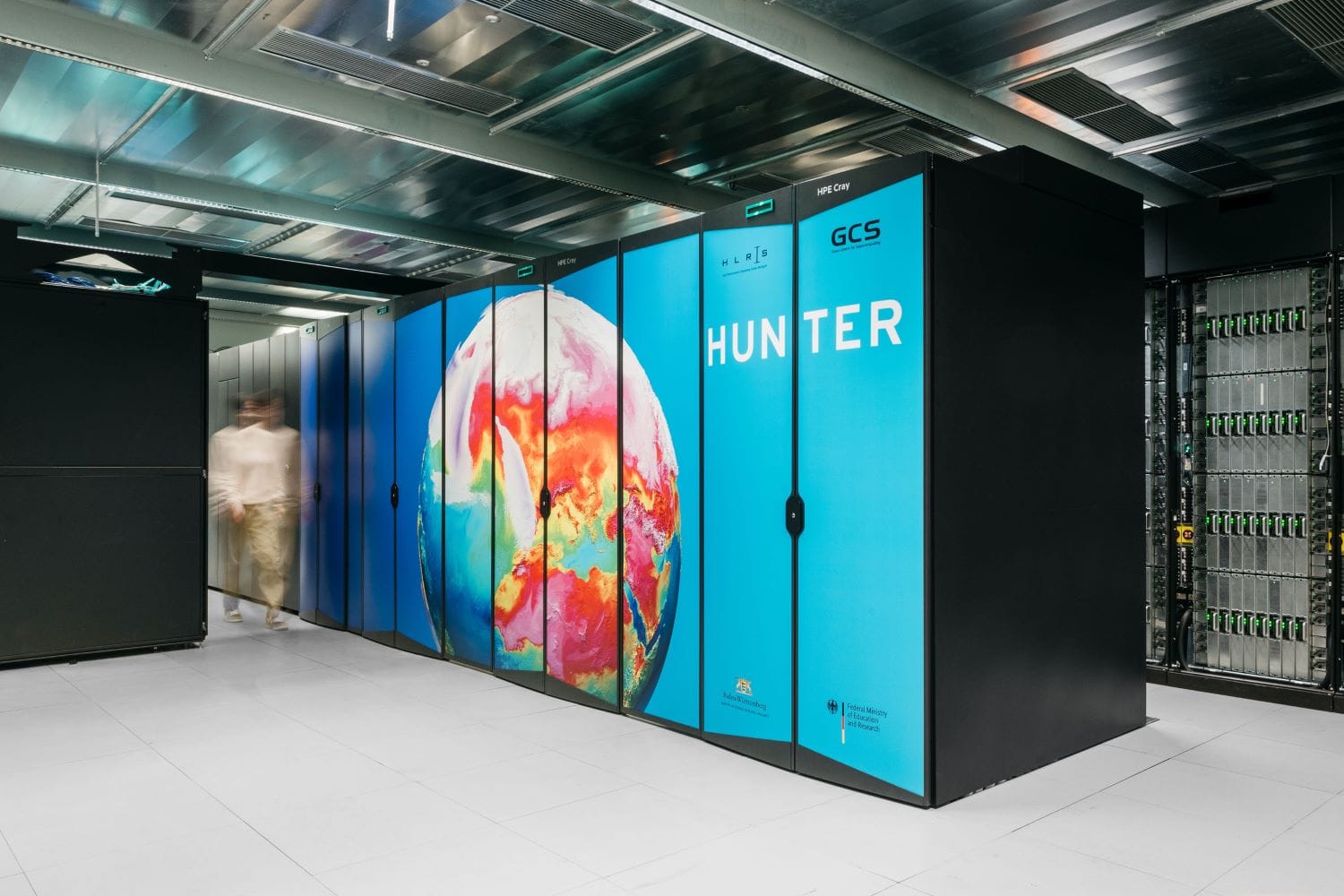Sure! Here’s the translation of your text into American English:
The High-Performance Computing Center at the University of Stuttgart (HLRS) celebrated the launch of its new supercomputer, Hunter, designed and manufactured by Hewlett Packard Enterprise (HPE). This system, equipped with cutting-edge technology, will be used for large-scale simulations, artificial intelligence, and data analysis across scientific, industrial, and public sector fields. Additionally, Hunter stands out for its focus on sustainability, utilizing a fanless liquid cooling system and dynamic energy control technology to optimize its energy efficiency.
With an architecture based on AMD Instinct™ MI300A accelerated processing units (APUs), Hunter combines CPU and GPU cores in a single package, achieving an 80% reduction in energy consumption compared to its predecessor, Hawk. This advancement marks a new chapter in the history of high-performance computing in Stuttgart, with a maximum theoretical performance of 48.1 petaflops—almost double that of Hawk.
The supercomputer will be utilized in complex projects such as engineering, climate modeling, biomedical research, and materials science, as well as opening new possibilities for advanced artificial intelligence applications, including the development of large-scale language models in multiple European languages.
Funding and Strategic Collaboration
The project, which had a total cost of 15 million euros, was co-funded by the Ministry of Science, Research and the Arts of Baden-Württemberg and the Federal Ministry of Education and Research of Germany, as part of the data-intensive computing and high-performance computing (HPC/DIC) strategy. Funding was facilitated by the Gauss Centre for Supercomputing (GCS).
Leadership in Sustainability and Energy Efficiency
Hunter incorporates innovative technologies such as the fanless liquid cooling system developed by HPE and dynamic energy control software that adjusts electricity consumption in real-time based on the needs of each application. These features not only enhance energy efficiency but also significantly reduce operating costs, aligning with HLRS’s sustainability objectives.
A Promising Future for High-Performance Computing
Hunter will be a cornerstone of the first phase of the HammerHAI project, an artificial intelligence factory announced by EuroHPC Joint Undertaking in 2024. This program aims to facilitate access to AI in Europe and enhance competitiveness in research and industrial innovation. Additionally, HLRS is already planning the installation of its next supercomputer, Herder, which will significantly surpass Hunter’s capabilities and is expected to be ready by 2027.
With this inauguration, HLRS strengthens its position as a leader in high-performance computing and sustainability, contributing to the scientific and technological advancement of Germany and Europe.

